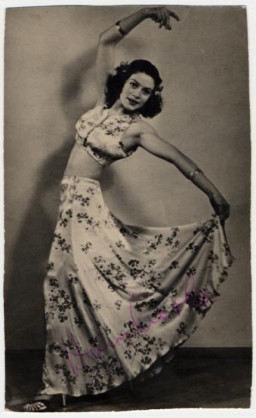You searched for: 宠物理财源码快速搭建【TG���������@EK7676】平台包网搭建宠物理财源码快速搭建【TG���������@EK7676】平台包网搭建16pkfgqti7
<< Previous | Displaying results 131-140 of 256 for "宠物理财源码快速搭建【TG���������@EK7676】平台包网搭建宠物理财源码快速搭建【TG���������@EK7676】平台包网搭建16pkfgqti7" | Next >>
-
Maria Orlicka
ID CardMaria was born to a poor family in the industrial town of Jaworzno, not far from Krakow, in southwestern Poland. Both of Maria's parents worked. Like her parents, Maria was baptized in the Roman Catholic faith. 1933-39: Maria took care of the house when her parents were working. She was 11 years old when the Germans invaded Poland on September 1, 1939. German troops reached Jaworzno that same month. Jaworzno was in an area of Poland that became formally annexed to Germany. 1940-44: The Germans arrested…
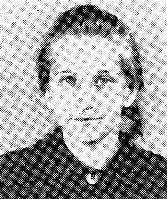
-
Lisa Dawidowicz
ID CardLisa was born to a Jewish family in the small city of Ostrog in southeastern Poland. Her parents operated a grocery out of their residence; the front half of the house was a store and the rear half was their home. Ostrog was an important center of Jewish religious learning in Poland, and by 1933 Jews made up almost two-thirds of the city's total population. 1933-39: Lisa's family was religious and they regularly attended services. Lisa studied at a Polish school until the Soviets arrived in September…

-
Mendel Grynberg
ID CardMendel was raised in a large, Yiddish-speaking, religious Jewish family in Sokolow Podlaski, a manufacturing town in central Poland with a large Jewish population of about 5,000. Upon completing school, Mendel worked as a shoemaker. He was also active in a local Zionist organization. 1933-39: Mendel was married and had a family when the Germans invaded Poland on September 1, 1939. Aircraft bombed the town's market and other civilian targets before victorious German troops marched into Sokolow Podlaski on…
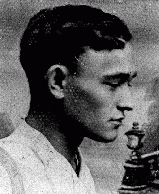
-
Benjamin Frydmacher
ID CardBenjamin was born in the industrial city of Lublin to a large, Yiddish-speaking Jewish family. He attended public school, and after he graduated at the age of 14, he apprenticed at the same tannery where his father was the tannery master. 1933-39: After completing his apprenticeship, Benjamin became the assistant tannery master. After his father's death in 1938, he became the production tannery master. He and his wife, Gucia, lived with his mother at 50 Lubartowska Street. In 1938 the Frydmachers had a…
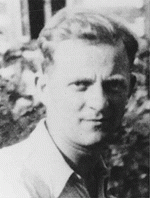
-
Wolf Wajsbrot
ID CardWhen Wolf was a young boy, his family moved to France to escape Poland's economic instability and growing antisemitism. Soon after they settled in Paris, his father found work in construction, and Wolf started elementary school. 1933-39: Paris was home to Wolf, but he loved to listen to his parents reminisce about autumns in Krasnik and journeys to Lublin. Hitler invaded Poland in 1939. The Wajsbrots learned of the death camps and mass deportations of Jews. Wolf's parents no longer spoke of the past. Wolf…
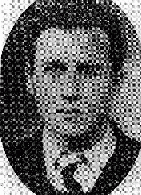
-
Beads used by a Dutch Jewish girl in hiding
ArtifactThese tiny black, white, gold, and clear glass beads were used by Rachel “Chelly” de Groot from November 1942 to April 1944 and recovered by her brother Louis after the war. Chelly used the beads to make handicrafts. On November 16, 1942, Chelly, then 15, Louis, 13, and their parents Meijer and Sophia left Arnhem and went into hiding after the Dutch police warned them of a raid. Meijer and Sophia hid in Amsterdam while Chelly and Louis moved around to different locations. In summer or fall 1943,…
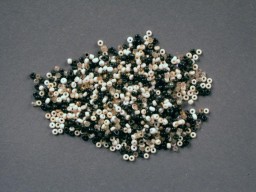
-
Deportations to and from the Warsaw Ghetto
ArticleAt its height, the Warsaw ghetto held over 400,000 people living in horrendous and worsening conditions. Learn about deportations both to and from the ghetto.

-
Pesia Szczupakiewicz
ID CardPesia, born Pesia Ander, was one of five children born to a Jewish family in the central Polish village of Nur. In 1929 Pesia married Shlomo Szczupakiewicz and they moved to his home town of Malkinia. A year later their first child, daughter Ida, was born. 1933-39: In September 1939, before the invading Germans reached Malkinia, Pesia fled with her family to the countryside. Exhausted, they returned to their house in Malkinia only a few weeks later. Shlomo then learned that a childhood friend had become a…
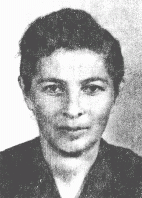
-
Dawid Sierakowiak
ArticleYoung people's diaries capture some of the most heartbreaking experiences of the Holocaust. Learn about the diary and experiences of David Sierakowiak.
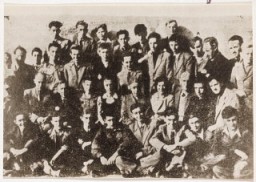
-
Studio Portrait of Theresia Seibel
PhotoTheresia Seibel, born in 1921, was a member of the Sinti froup (Sinti and Roma are two main groups that make up the Romani, or Gypsy, ethnic minority). Theresia joined Germany’s Wuerzburg Stadttheater at age 16, performing as a singer and dancer. In 1941, she defied Gestapo orders to be sterilized and was three months pregnant with twins by the time she was called in for the procedure. She was allowed to continue the pregnancy on the condition that the babies would be given at birth to the clinic…
